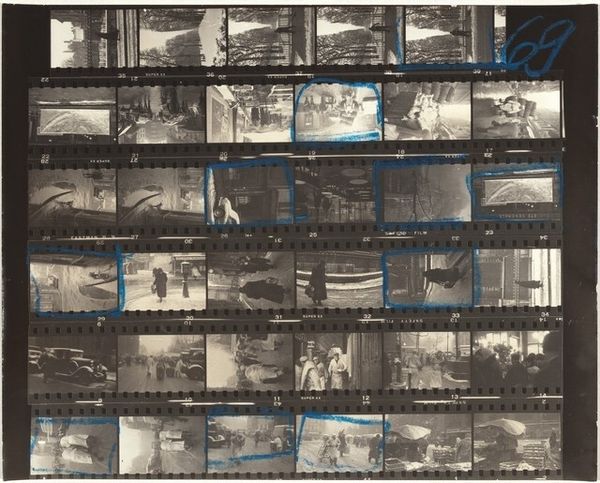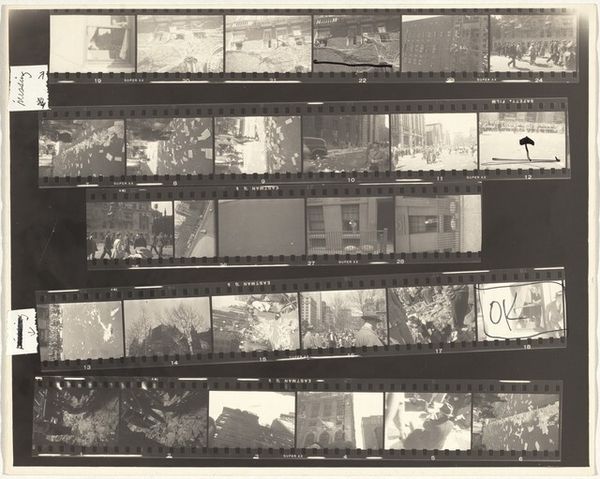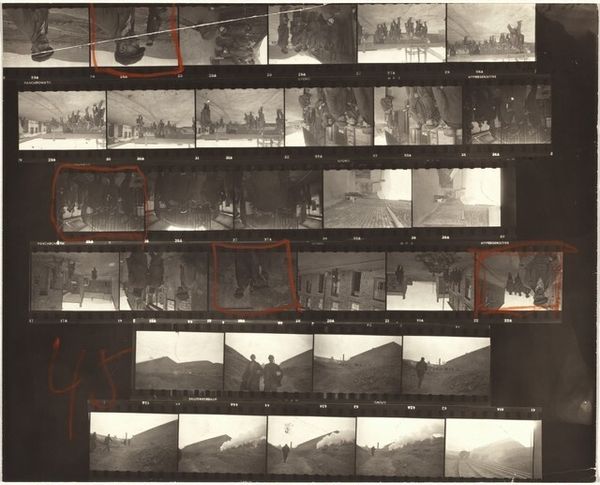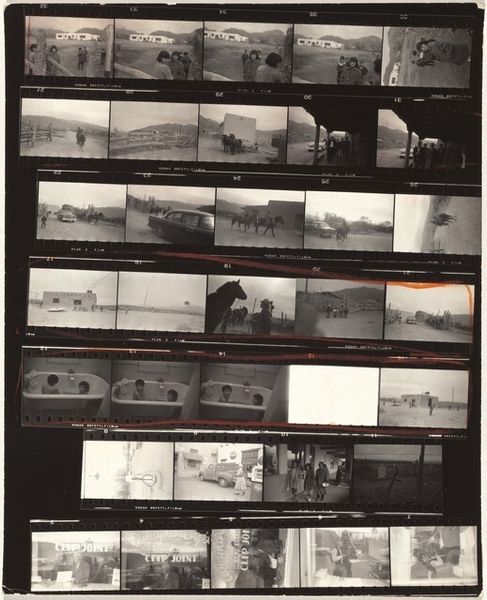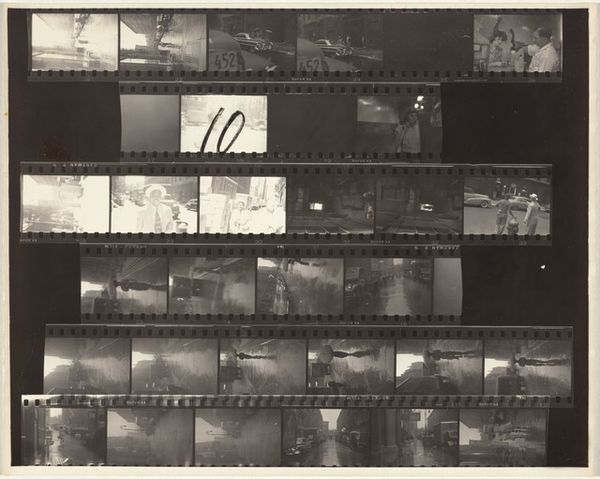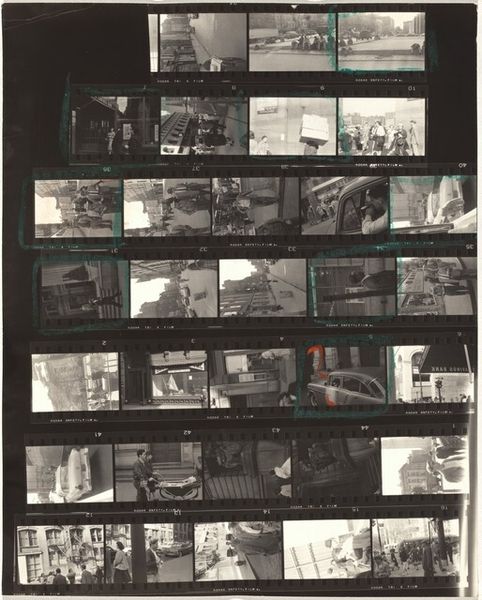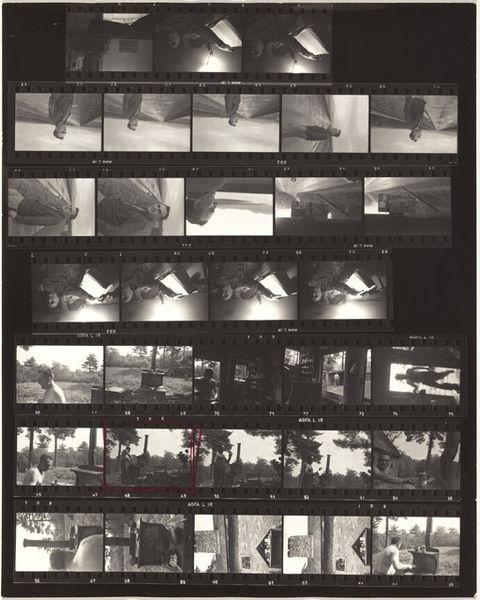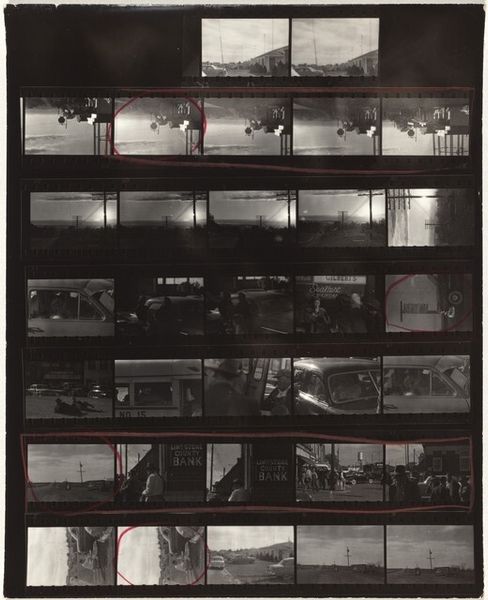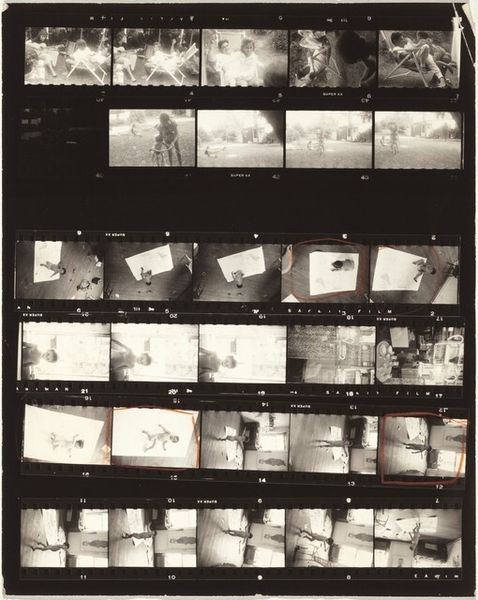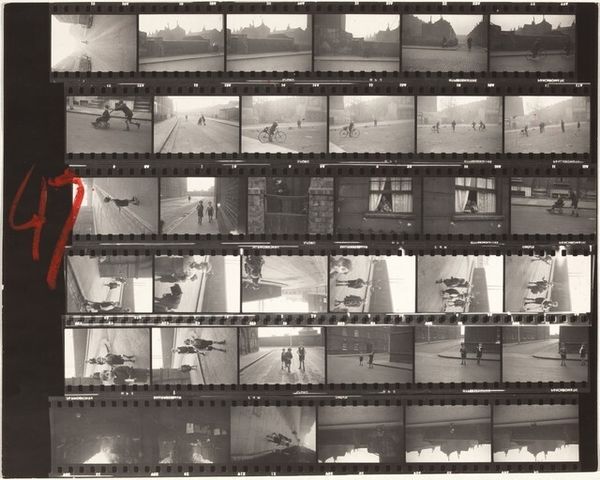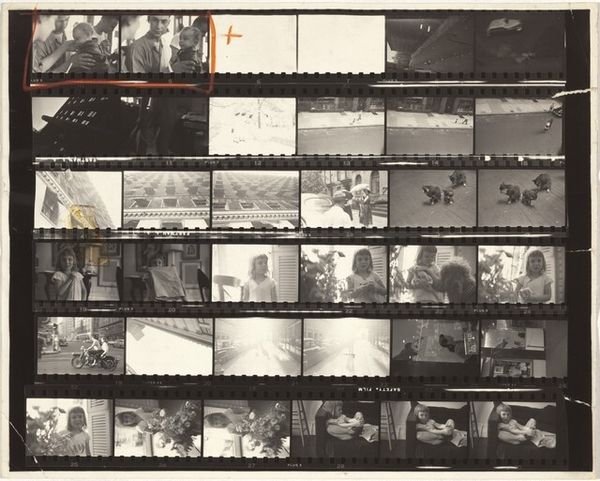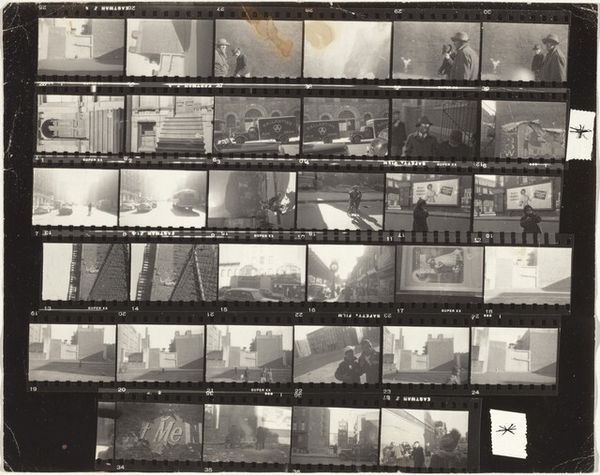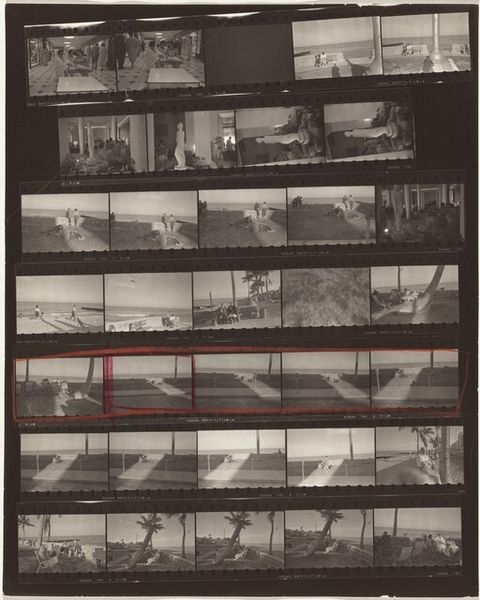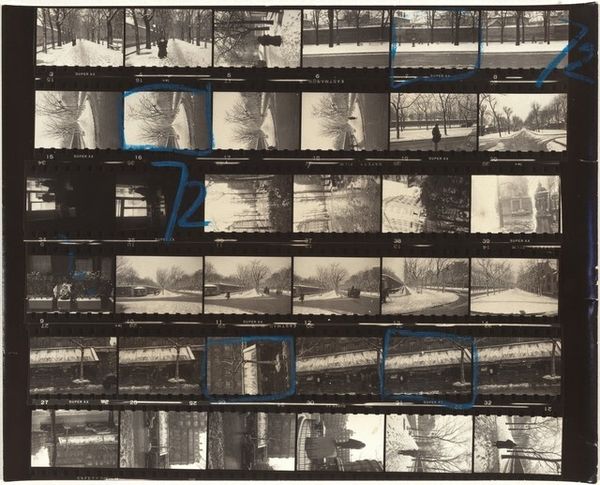
Dimensions: overall: 20.1 x 25.2 cm (7 15/16 x 9 15/16 in.)
Copyright: National Gallery of Art: CC0 1.0
Editor: This is "Paris 79B," a black and white photograph contact sheet by Robert Frank, taken between 1951 and 1952. It's… different from his other works. More fragmented, showing outtakes. What stands out to you in terms of its visual structure? Curator: The marked film itself presents the work not as a finished, perfected image, but rather as a series of investigations. Consider the indexical quality: each frame a frozen moment in time, connected linearly, yet offering multiple perspectives. What compositional relationships do you observe between the selected images within the grid? Editor: I see recurring elements—a figure with a dog, industrial structures—creating a rhythm, but also contrast with the completely empty frames. Is the "failed" quality part of the message? Curator: Precisely. Frank's choice to present these outtakes transforms the photographic process into the subject. Note the varying depths of field, the play of light and shadow. These technical choices reveal his method, challenging the traditional notion of the photograph as a singular, perfect representation. How does the raw, grainy texture contribute? Editor: It feels very immediate, like it wasn't staged, and gives a sense of grittiness that smooths out some of the possible beauty. It's compelling to consider the structure and choices involved in crafting the final composition, as well as the overall feeling of capturing real life. Curator: Precisely. The imperfections serve as an integral component of its overall meaning and challenge our presuppositions around "good" or "successful" art, which creates an opportunity to see artmaking as process. Editor: That is such a helpful new way to see art. Thank you for opening my eyes to looking closely at visual elements!
Comments
No comments
Be the first to comment and join the conversation on the ultimate creative platform.
